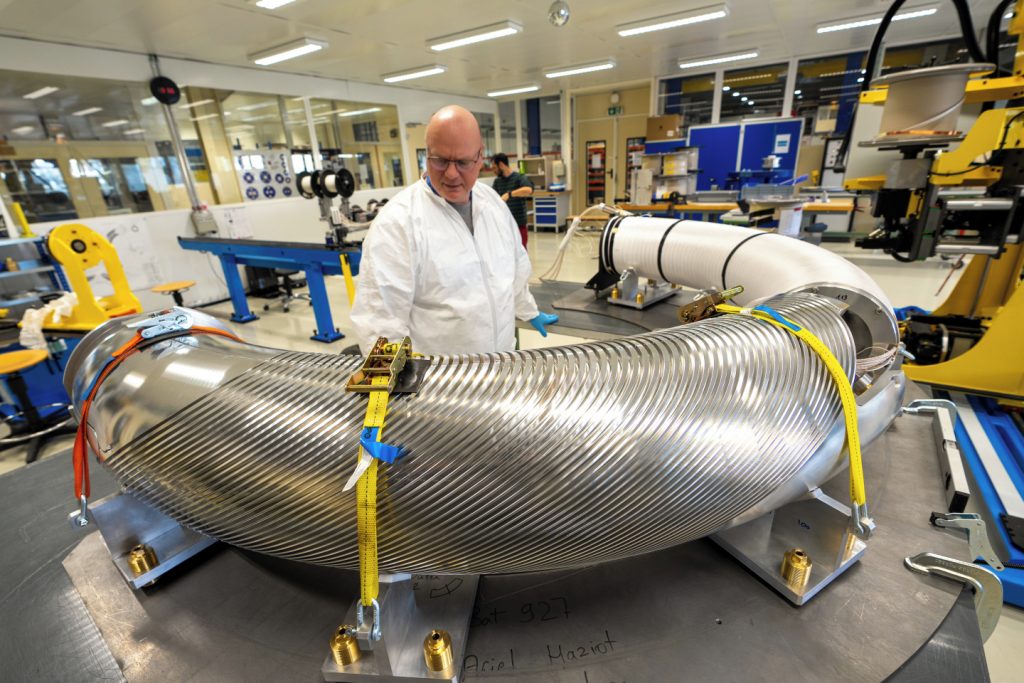A curved magnet with much potential
Rope winding and giant pasta shapes meet particle physics in Fusillo, in a new magnet prototype with possible medical applications in hadron therapy
By Insa Meinke

What do rope winding and giant pasta shapes have to do with particle physics? The answer is a new superconducting magnet prototype under development at CERN, lovingly named Fusillo because of its shape. Originally, CERN physicists became interested in developing this technology for use in compact particle accelerators, for example in a new storage ring for the CERN-based experiment ISOLDE. However, development of this technology could also have a big impact in the medical field. For example, one of the possible future applications of magnets like Fusillo is in hadron therapy to treat cancer.
Hadron therapy is a type of radiotherapy that uses beams of protons or light ions to irradiate cancer tissue. Compared to X-rays, which use beams of light, beams of ions release less energy along their path and more energy in one specific spot. This causes less radiation damage to the healthy tissue surrounding the tumour and allows a higher dosage to be administered safely, resulting in a faster destruction of the tumour. Less damage to the surrounding tissue also leads to a lower toxicity rate, meaning the patient will feel better during and after treatment.